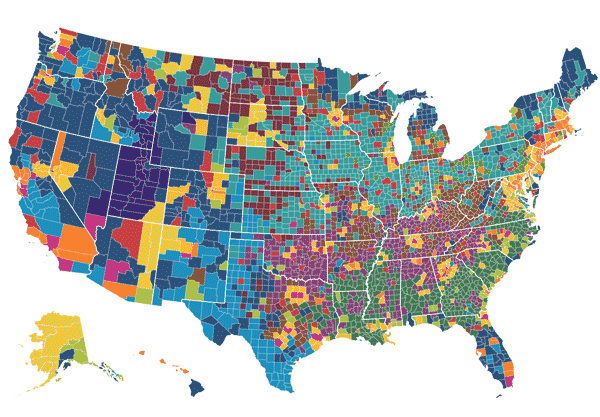 Dante Chinni
Dante Chinni
Director, American Communities Project, Michigan State University J-School
Published
March 04, 2024
The United States can be a difficult place to understand in 2024.

Which America are you talking about? The red one or the blue one? The urban one or the rural one? The one with high incomes and expensive homes, or the one where people are struggling to make ends meet? In reality, you have to understand all of them if you really want the whole picture with all its complexities.
The American Communities Project (ACP) is trying to fully examine that picture by combining survey data with on-the-ground research in 15 different types of communities around the country, everything from Big Cities to Aging Farmlands. The Project, based at Michigan State University and funded by the Robert Wood Johnson Foundation, is in the middle of a three-year effort to study the nation’s fraying political, cultural, and socioeconomic fabric.
The work on fragmentation started last year with a massive 5,000-person survey, conducted by Ipsos, that explored the attitudes and opinions in our 15 community types. You can read the survey results on our site, but here are some key findings:
- Americans experience and perceive very different realities. The most pressing issues at the community level can vary greatly. And there is a perception-driven disconnect between big local and national issues. Inflation is seen as a top issue everywhere, but beyond that the numbers get very complicated. Some cite guns and gun violence. Others cite opioids and drug addiction. Taxes rate high in others. And, more broadly, there is a dissonance between national and local concerns that suggests many attitudes are driven more by perception than experience. Some issues that voters say are big ones nationally, such as immigration, don’t show up as big issues in any community.
- Across communities, most people believe their lives are on the “right track,” but they are deeply concerned about the direction of the country. On the whole, people seem to feel good about their individual circumstances and pretty good about their community. But the views are much bleaker when the United States is the entity in question.
- A series of statements about values reveal some broad areas of agreement—particularly around the economy and abortion. But others show wide disagreement. In total, there are nine statements in which every community type is in broad agreement (that is respondents in all types are either over or under the 50% mark). For instance, 50% or more in each community type say, “Obtaining an abortion should be a decision made by a woman in consultation with her doctor, without government’s involvement.” But 10 other statements show differences across ACP community types, some massive. “The right to own a firearm is central to what it means to be an American,” is one such statement.
The survey was just the beginning of our work. Since then, we have begun visiting real communities around the country to see how those findings manifest themselves in the real world. In the coming days and weeks, we will publish stories, including some by veteran journalist Ray Suarez, and release videos that explore how people in the Project’s different versions of America see the nation, their neighbors, and themselves.
If you’re interested in the Project’s work, please visit our site www.americancommunities.org, and subscribe to our newsletter. If you are interested in fully understanding this complex nation in a long campaign season, you will not be disappointed.
About the author

Dante Chinni
Dante Chinni is the director of the American Communities Project based at Michigan State University.





